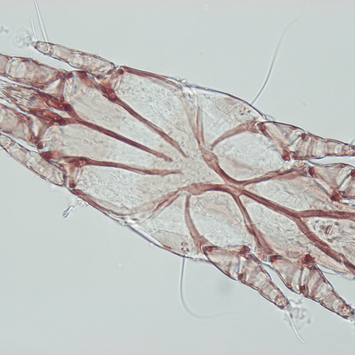
Ectoparasites of Exotic Birds - Lisbon Zoo
Faculty of Sciences of the University of Lisbon
This was the subject of study of my Master's thesis in Human Biology and Environment.
The results increased the knowledge about ectoparasites of exotic birds of the Lisbon Zoo (Portugal). This is important because birds maintain contact with innumerable potentially pathogenic agents for themselves, other animals and even humans.
Abstract
Birds maintain contact with innumerable potentially pathogenic agents for themselves, other wild animals, domestic animals and even humans, making the subject of extreme importance to health authorities. Ectoparasites are also studied as biological indicators of the integrity of the ecosystem where they are inserted, together with their hosts. In spaces of limited size, where birds of different origins are found, species of parasites that in the natural habitat are in balance with the host, may become more pathogenic and parasite other birds less adapted to the parasitism. In this sense it becomes essential to trace the exotic bird ectoparasites of the Lisbon Zoo. The feather mites were the only ectoparasites collected. Feather mites are the most diverse and abundant group of arthropods that permanently lives on birds. These mites are morphologically adapted to the different microhabitats on their host feathers, which contributes to their diversity. There is a high specificity between the mites and their bird hosts, especially due to the transmission process that occurs mainly from parents to offspring during the parental care, so each bird group often hosts a specific feather mite fauna. Despite some isolated cases of parasitism, most feather mites are not true parasites, but are rather considered as commensals. The aim of this study was to collect and identify exotic bird ectoparasites from the Lisbon Zoo, particularly feather mites, as well as to indicate new associations between these ectoparasites and birds. The main method of sampling was the collection of fallen feathers from the bird facilities of the Lisbon Zoo. The mites were mounted on microscopic slides for identification using Hoyer’s medium. There are 123 species of birds of 20 orders in the Zoo Lisbon, of these 41 species had their mites analyzed. Twenty-two species and 5 morfospecies of mites from 20 genera were found, with 7 being the number of mites identified up to the specific level. There were 15 species of the superfamily Analgoidea, which occurs mainly in Passeriform birds and in the superfamily Pterolichoidea, which occurs mainly in non - Passeriform birds, 11 species were recorded. The most abundant feather mite family was Analgidae (Analgoidea), with 7 species in 2 orders of birds, followed by Pterolichidae (Pterolichoidea) (6 species) and Xolalgidae (Analgoidea) (3 species). The large number of unknown species reinforces the need for taxonomic and ecological work with this diverse group of commensal mites.

























